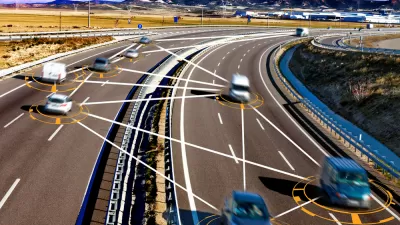Introducing "algorithmic space planning." The last word in that phrase shows that planners should take notice of the new technology just as much as architects and engineers.

Several companies have successfully achieved an idea long-thought possible but never proven in the real world: "algorithmic space planning." It's like autonomous vehicles, except it's autonomous building design.
"Humans have been trying to harness the power of computers to automatically generate building designs for decades. Like turning lead into gold, it seemed like a foolhardy endeavor that consumed many hopefuls. But after years of tepid results, a number of companies are finally cracking the alchemy of algorithmic space planning," writes Daniel Davis.
Algorithmic space planning is already primed for deployment too, in the city of Alkmaar, located 20 miles north of Amsterdam.
"The mastermind behind one of the proposed development schemes is The Living, a New York–based research group founded by David Benjamin and acquired by Autodesk in 2014," explains Davis. "The prospective project developer, the Van Wijnen Groep, had seen how The Living employed generative algorithms to create Autodesk’s MaRS Office, in Toronto, and believed a similar process could generate housing development plans."
The source article includes renderings and a lot more on the implications of the newly demonstrable technology for designing the built environment.
Then there's the other examples of algorithmic space planning, including "Higharc, which is creating software to automatically lay out residential designs; Spacemaker, Archistar, and TestFit, which are all doing the same for commercial real estate. Davis also notes that he manages an effort by WeWork, "which is developing tools to automate office layouts."
FULL STORY: Can Algorithms Design Buildings?

Alabama: Trump Terminates Settlements for Black Communities Harmed By Raw Sewage
Trump deemed the landmark civil rights agreement “illegal DEI and environmental justice policy.”

Planetizen Federal Action Tracker
A weekly monitor of how Trump’s orders and actions are impacting planners and planning in America.

Why Should We Subsidize Public Transportation?
Many public transit agencies face financial stress due to rising costs, declining fare revenue, and declining subsidies. Transit advocates must provide a strong business case for increasing public transit funding.

Understanding Road Diets
An explainer from Momentum highlights the advantages of reducing vehicle lanes in favor of more bike, transit, and pedestrian infrastructure.

New California Law Regulates Warehouse Pollution
A new law tightens building and emissions regulations for large distribution warehouses to mitigate air pollution and traffic in surrounding communities.

Phoenix Announces Opening Date for Light Rail Extension
The South Central extension will connect South Phoenix to downtown and other major hubs starting on June 7.
Urban Design for Planners 1: Software Tools
This six-course series explores essential urban design concepts using open source software and equips planners with the tools they need to participate fully in the urban design process.
Planning for Universal Design
Learn the tools for implementing Universal Design in planning regulations.
Caltrans
Smith Gee Studio
Institute for Housing and Urban Development Studies (IHS)
City of Grandview
Harvard GSD Executive Education
Toledo-Lucas County Plan Commissions
Salt Lake City
NYU Wagner Graduate School of Public Service





























